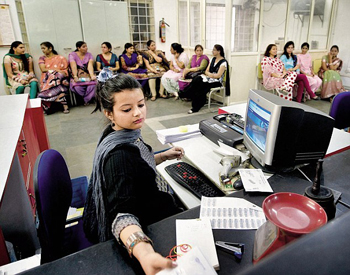New Delhi, Mar 6: Women in India earn 25 per cent less than men, with men earning a median gross hourly salary of Rs 345.80, while for women it is only Rs 259.8, says a Monster India report. Though the gender pay gap has narrowed by 2 percentage points from 27.2 per cent in 2015 over last year. About 68.5 per cent women of India Inc feel that gender parity is still a concern.
The Monster Salary Index (MSI) on gender noted that sector-wise the average gender pay gap in the manufacturing sector stood at 29.9 per cent -- the highest in India. The Manufacturing sector was followed by the IT sector where it stood at 25.8 per cent. The gender pay gap in the BFSI sector was at 21.5 per cent, slightly under the general gender pay gap in India (25 per cent).
In Education and Research sector, the average gender pay gap was at 14.7 per cent. "In India, the gender pay gap story holds true and the overall gap across India Inc is at 25 per cent. This primarily is a manifestation of the underlying diversity challenges that organisations currently face," Sanjay Modi, Managing Director, APAC & Middle-East, Monster.com said.
Modi further noted that "there is a dire need for tangible initiatives to bridge this pay gap with removing structural impediments to women's growth providing access to skills training, jobs and decision-making". The survey further noted that despite conversations on equal pay and initiatives being taken to create a more inclusive environment, 62.4 per cent women feel that their male counterparts get more promotions opportunities and gender continues to play a role in deciding promotions along with other parameters.
MSI is an initiative by Monster India in collaboration with Paycheck.in (managed by WageIndicator Foundation) and IIM-Ahmedabad as a research partner. The survey was categorised under the parameters of- workplace, growth and safety. The survey was conducted on Monster India's database capturing responses from over 2,000 working women.





Comments
Add new comment